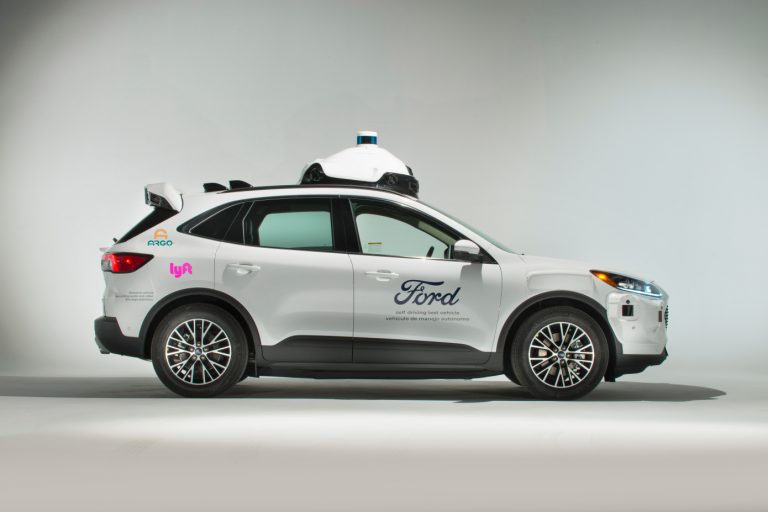
The United States government has announced a conditional $9.2 billion loan for BlueOval SK (BOSK) — owned by Ford and South Korean battery producer SK On — to build three battery manufacturing plants, as part of efforts to expand domestic energy production.
Bloomberg reports that the loan is by far the biggest government backing for a US automaker since the bailouts in the 2009 financial crisis. The enormous loan is significant in Biden’s administration’s efforts to American manufacturers to counter China’s dominating green energy technologies.
The development follows the execution of Ford’s energy project – a joint venture it has with SK On Co. The new factories, which Ford is counting on as it pivots into electric vehicles, are already under construction in Kentucky and Tennessee.
Register for Tekedia Mini-MBA edition 19 (Feb 9 – May 2, 2026): big discounts for early bird.
Tekedia AI in Business Masterclass opens registrations.
Join Tekedia Capital Syndicate and co-invest in great global startups.
Register for Tekedia AI Lab: From Technical Design to Deployment (next edition begins Jan 24 2026).
Ford has an expansion plan that will take its EVs production to 2 million in 2006, a giant leap from the roughly 132,000 it produced last year.
The US is facing cleaner energy hurdles in its push to phase out combustible vehicles. Though Tesla leads the charge with its Gigafactory in the United States with a production capacity of about 37 gigawatt-hours, which will be the largest lithium-ion battery factory in the world in 2020, available energy falls short of what is needed – keeping the US behind China.
The South Asian giant now has the world’s largest maker of lithium-ion batteries – powered by global battery behemoths such as Contemporary Amperex Technology Limited, which has factories around the globe – including Europe.
Ford relies on Tesla to power its electric vehicles having recently secured its EV drivers access to 12,000 Tesla’s charging points across North America. The loan being granted by the Loan Programs Office (LPO) is the largest one they have ever provided, nearly quadrupling the size of last year’s $2.5 billion loan for Ultium Cell, a joint venture between General Motors and LG. The loan’s significant scale is partly due to the Inflation Reduction Act passed last year, which increased the LPO’s lending budget to $400 billion. To provide context, over the previous 14 years, the LPO had distributed around $33 billion. The additional capital will be crucial in achieving the Biden-Harris administration’s goal of electric vehicles (EVs) comprising 50% of US car sales by 2030.
According to Bloomberg, the construction of three factories by BlueOval, along with an adjacent Ford EV assembly unit, is estimated to cost $11.4 billion. BlueOval has previously received subsidies from state governments, meaning taxpayers will be offering low-interest financing for a significant portion of the expenses.
Furthermore, Ford’s domestically produced electric cars and SUVs will qualify for billions of dollars in incentives embedded in the Inflation Reduction Act’s $370 billion clean-energy funding, which is part of a landmark climate measure that narrowly passed into law approximately a year ago. The US government will subsidize battery manufacturing, and buyers may be eligible for additional tax rebates of up to $7,500 per vehicle.
The combination of incentives, government lending, and private-sector investment has led to a manufacturing boom following the passage of the Inflation Reduction Act. More than 100 battery and electric vehicle production projects, representing a total investment of around $200 billion, have been announced or are already under construction in the US.
The loan will finance two plants in Kentucky and one in Tennessee, all of which will produce batteries for Ford and Lincoln’s upcoming EV models. Earlier this year, the automaker also revealed plans for an LFP battery plant in Michigan. Ford aims to introduce two million EVs by 2026, with the All-Electric Explorer, Mustang Mach-E, and E-Transit already available and an EV lineup in progress for Lincoln.
The LPO emphasizes that the loan will create job opportunities, including 5,000 construction jobs and an additional 7,500 operational jobs once the plants are operational. The investment aligns with President Biden’s Justice40 Initiative, which aims to direct 40% of specific federal investments, including LPO loans, to disadvantaged communities.
In an interview with Bloomberg Green, Jigar Shah, the director of the LPO who is a solar entrepreneur, described the federal government’s battery lending initiatives as a means to “onshore and reshore” manufacturing. He emphasized that the program’s goal is not only innovation but also to encourage more of the supply chain to be manufactured in the US.



